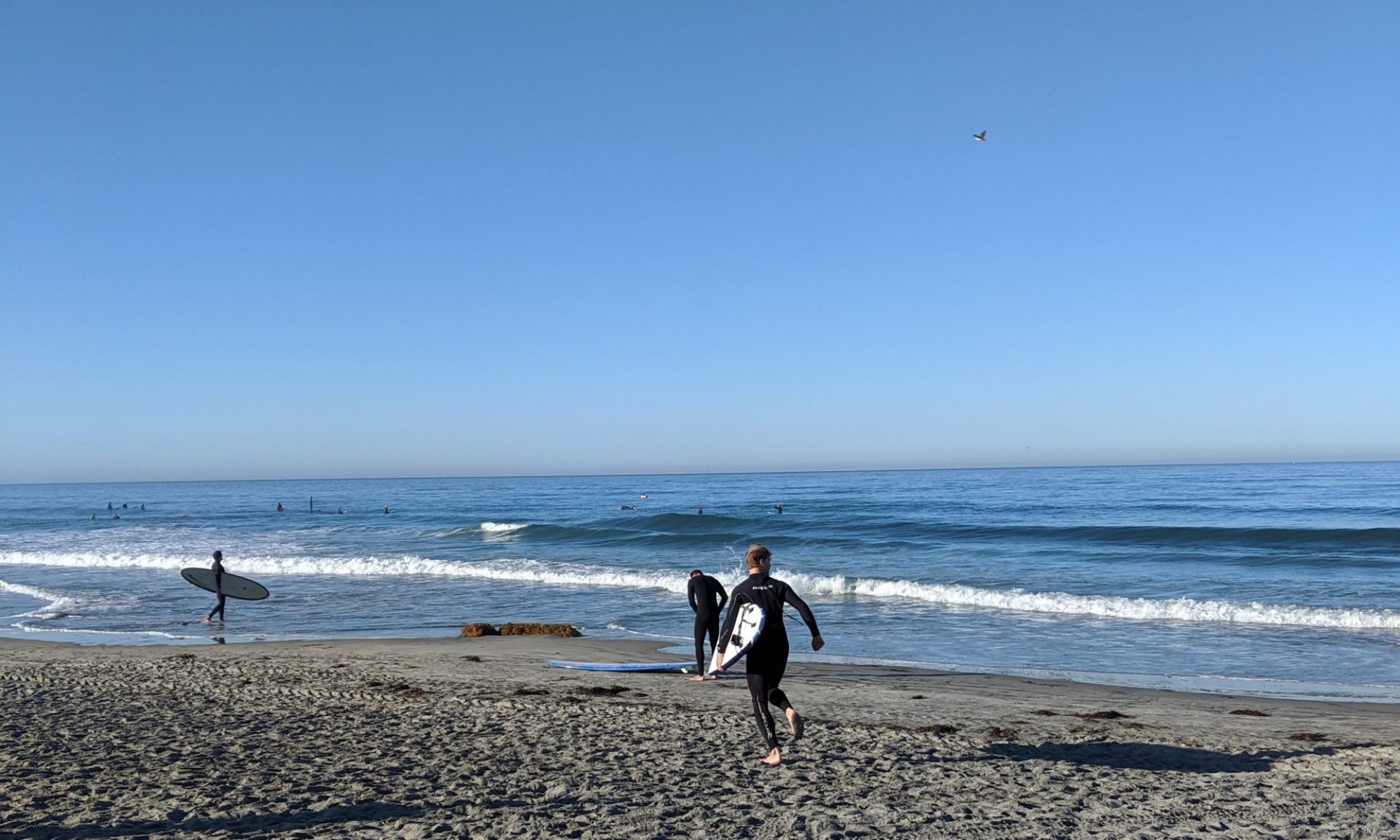Contact me if you are interested in this internship at Qualcomm.


I Like Waves
Contact me if you are interested in this internship at Qualcomm.


At the beginning of 2013, two important things have changed for me. I left Berkeley and academia and moved to San Diego, California to join Qualcomm R&D.
Here, I will continue doing applied research in acoustics, signal processing, and spatial audio technologies. Besides this, I am hoping to improve my surfing skills and to learn Spanish.

The forthcoming ACM Multimedia paper “Name That Room: Room Identification Using Acoustic Features in a Recording” I wrote together with Howard Lei and Gerald Friedland received a nice ICSI news feature this week.

I just found the time to go through the Technology Trends in Audio Engineering essay written by the leaders of 17 AES technical committees and released half a year ago.
While reading this 18 page document I was positively surprised to see how many different interest groups have an interest in spatial audio related issues.
The 10 groups which mention spatial audio are:
The 7 groups that do not seem to think much about spatial audio are:
 Similar to last year, I am teaching two modules at CNMAT’s MaxMSP Summer School.
Similar to last year, I am teaching two modules at CNMAT’s MaxMSP Summer School.
The patches of today’s lecture on Software Testing in Max (which is based on this paper) can be found here.
On Friday, I will use CNAMT’s multichannel loudspeaker system to teach spatial audio using Jamoma.

Today Trond Lossius, Jan C. Schacher, and me received the Best Paper Award for “SpatDIF: Principles, Specification, and Examples” at the 9th Sound and Music Computing Conference.
This paper presents the current state of our long-term effort in creating a community-driven interchange format for spatial audio scenes. More on www.SpatDIF.org.
Here the reference:
@inproceedings{SpatDIF-SMC12,
Address = {Copenhagen, DK},
Author = {Nils Peters and Trond Lossius and Jan C. Schacher},
Booktitle = {Proc. of the 9th Sound and Music Computing Conference},
Title = {{SpatDIF}: Principles, Specification, and Examples},
Year = {2012}}
We are now invited to submit a revised and expanded version for publication in The Computer Music Journal (MIT Press).
I am similarly excited that the paper “An Automated Testing Suite for Computer Music Environments” I wrote together with Trond Lossius and Timothy Place was also nominated for Best Paper.
p>I am looking forward to SMC2012 in Copenhagen, Denmark, the 133rd AES Convention in San Francisco, USA, and the ACM Multimedia 2012 in Nara, Japan:
Between The Ahnert and The Blauert, there is a new book in my library: The Ahrens:

From the description:
This book treats the topic of sound field synthesis with a focus on serving human listeners though the approach can be also exploited in other areas such as underwater acoustics or ultrasonics. The author derives a fundamental formulation based on standard integral equations and the single-layer potential approach is identified as a useful tool in order to derive a general solution. He also proposes extensions to the single-layer potential approach which allow for a derivation of solutions for non-enclosing distributions of secondary sources such as circular, planar, and linear ones. Based on above described formulation it is shown that the two established analytic approaches of Wave Field Synthesis and Near-field Compensated Higher Order Ambisonics constitute specific solutions to the general problem which are covered by the single-layer potential solution and its extensions. The consequences spatial discretization are analyzed in detail for all elementary geometries of secondary source distributions and applications such as the synthesis of the sound field of moving virtual sound sources, focused virtual sound sources, and virtual sound sources with complex radiation properties are discussed.
Another gem is the accompanied website, where Jens provides the Matlab source code for all Matlab figures used in this book – bravo Jens.
When you get stuck with Matlab, you find an answer to your problem usually in a reasonable amount of time – usually. Yesterday, I was really unlucky with the following.
My annoying problem was that (on a mac) color plots exported as eps, will be rendered with blurry edges. See left picture below. The right picture shows how my plot looks in Matlab and how I want it to be exported.
It was relatively easy to find people with a similar problem (here, or there) as well as an explanation for it: The culprit is the anti-aliasing rendering feature which is enabled in practically every eps viewer. So the problem is not Matlab itself, but rather how Matlab and the eps renderer are interacting. However, finding a working solution was hard. After one day of searching (and finally using Bing instead of Google search), I found a working solution in this thread.
Here is the fix: In Matlab, in the Export setup under Rendering, you have to use the OpenGL renderer, not the standard painter. That’s it!
I prefer to save figures directly from the script where I also compose the plot in the first place. For doing this, just add the following line to your Matlab code:
plot(data); set(gcf,'renderer','opengl'); % the magic line saveas(gcf,'test.eps','epsc'); |
I’m happy to have solved the issue, but I am also starting to wonder about scientific plotting tool alternatives, such as python’s matplotlib or Gnuplot.
Last week I attended a lecture by neuroscientist Vittorio Gallese entitled “What is so special with embodied simulation”. Among other things, I was really surprised to learn that the brain encodes positions of objects in space using egocentric as well as allocentric coordinate systems. Is that the neurological argument why SpatDIF supports more than just one coordinate system?